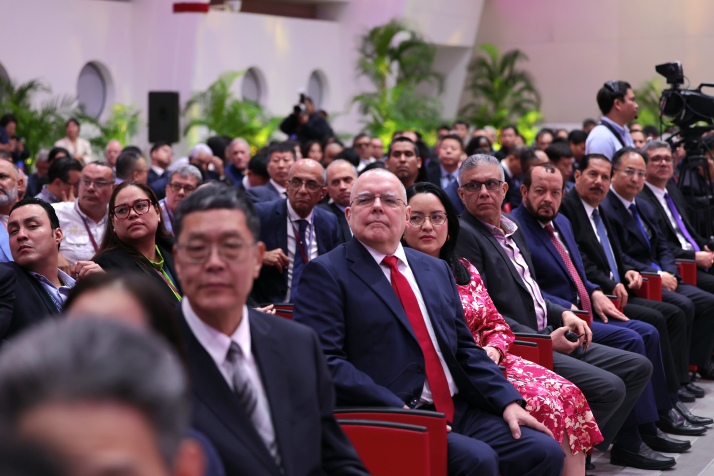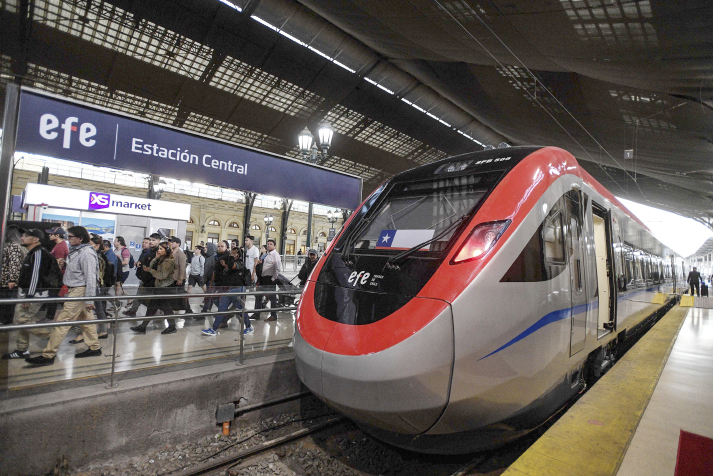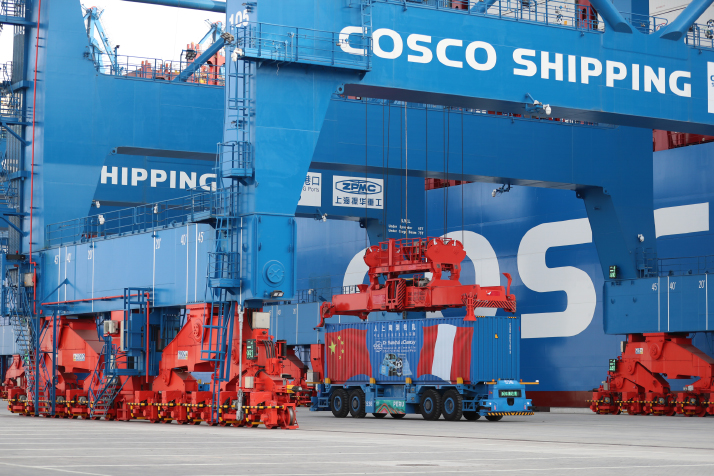| Voice |
| New horizons for cooperation | |
|
|
 Participants at the 17th China-Latin America and the Caribbean (LAC) Business Summit in Managua, Nicaragua, on November 18, 2024. The event drew over 500 participants from China and LAC countries (XINHUA)
As an old Brazilian saying goes, we know our true friends when we face difficulties. Currently, Latin American countries are suffering a form of bullying from the U.S. Government, which is showing many sticks and no carrots. The relationship between the Community of Latin American and Caribbean States (CELAC) and China is subject to pressure and threats. In the face of blackmail from U.S. authorities, even Brazil, a country with relative weight in international relations, is finding it challenging to adopt a more assertive stance regarding its legitimate interests in its relations with China, such as joining the Belt and Road Initiative (BRI) (The China-proposed BRI aims to boost connectivity along and beyond the ancient Silk Road routes—Ed.). Other countries in the Americas are being similarly bullied by Washington. For example, U.S. President Donald Trump has threatened to "take back" the Panama Canal (The Panama Canal was under U.S. control from its opening in 1914 until December 31, 1999—Ed.). Cuba and Venezuela are facing many economic difficulties due to sanctions and a harsh economic blockade. Furthermore, hundreds of immigrants in the United States are being deported to third countries without due process and treated in a degrading manner. Mexico and Canada are suffering from the imposition of additional tariffs under the pretext of combating fentanyl trafficking.  An electric and combustion dual-power train manufactured by China Railway Rolling Stock Corp. Qingdao Sifang Co. Ltd. awaits departure at the central station in Santiago, Chile, on January 19, 2024 (XINHUA)
Closer ties Brazilian President Luiz Inácio Lula da Silva paid a state visit to China from May 10 to 14. During his visit, on May 12, Mauricio Claver-Carone, U.S. advisor for Latin America and former President of the Inter-American Development Bank, spoke at a business forum in New York City, saying the Brazilian president should not be in China, but rather at the event in New York City. In the same speech, he said China was shiny and attractive but unreliable in the long term compared to the U.S. However, despite the threats from the U.S., countries in the region continue to appreciate China's presence. Even Argentina has had to recognize the importance and seriousness of China in economic matters. The currency swap agreement between the Central Bank of Argentina and the People's Bank of China remains in force and bilateral trade continues to grow (A currency swap deal allows two institutions to exchange payments in one currency for equivalent amounts in the other to facilitate bilateral trade settlements and provide liquidity support to financial markets—Ed.). It is worth remembering that governments come and go, but bilateral relations with China are increasingly solid. In this international context, marked by various uncertainties, especially after the U.S. Government has adopted such erratic measures, the defense of multilateralism is more essential than ever. In this regard, holding the Fourth Ministerial Meeting of the China-CELAC Forum in Beijing was an excellent counterpoint to unilateralism and the destruction of the international rules of coexistence. The successful ministerial gathering, held on May 13, showed the solidarity and good momentum of bilateral relations for now and the future. Chinese President Xi Jinping offered practical measures for incorporating Latin American and Caribbean (LAC) countries into China-proposed global initiatives for development, security and inter-civilizational exchange and dialogue. Xi proposed five cooperation programs. On the program for solidarity, Xi said China will work with LAC countries to support each other on issues bearing on their respective core interests and major concerns, firmly safeguard the international system with the UN at its core and the international order underpinned by international law, and speak with one voice in international and regional affairs. The second program is for development, under which China will join hands with LAC countries to uphold the multilateral trading system, foster greater synergy between their development strategies and expand high-quality Belt and Road cooperation. The third program is themed civilization, which is in defense of the shared values of humanity, such as peace, development, justice, democracy and freedom. The peace program supports the Proclamation of Latin America and the Caribbean as a Zone of Peace and the Declaration of Member States of the Agency for the Prohibition of Nuclear Weapons in Latin America and the Caribbean. Finally, the fifth program is for people-to-people connectivity, in which the Chinese Government is committed to offering courses and training for students and professionals from countries in the region, in addition to promoting cultural and tourism exchanges between peoples.  Intelligent container handling equipment at work in Chancay Port in Peru on November 14, 2024. Chancay Port is not only an important project under Belt and Road cooperation, but also the first smart and green port in South America (XINHUA)
Promising future When analyzing the recent relationship between China and LAC countries, it is worth mentioning that in 2008 and 2016, the Chinese Government released two white papers on its policy for Latin America. Looking back, we can see that many proposals have since been implemented and several infrastructure projects have been built. Trade volume has multiplied over the past 20 years, and Chinese investments are present in several countries—in bridges, railways, power transmission lines, hydroelectric plants, ports and highways. The expectation is that the Joint Action Plan for Cooperation in Key Areas (2025-27) adopted during the recent China-CELAC Forum ministerial meeting will further encourage LAC countries in their own productive, commercial and environmental integration. It is essential to highlight that China and LAC countries can take advantage of many synergies. In addition to natural resources, such as strategic minerals, oil and food, there is an excellent opportunity for Chinese companies to internationalize their activities at a time when the country has abundant capital, technologies and resources. For example, the development of local production of cheap, renewable energy could create competitive advantages in the LAC region for the creation of new skills in advanced industrial technology and data centers to support AI projects. Lula's speech at the China-CELAC Forum ministerial meeting is worth mentioning: "It is no exaggeration to say that, despite the almost 15,000 km that separate us, we have never been so close." His remarks summarize the perception of other LAC leaders and shows the success of the meeting between Lula and Xi. Finally, the ministerial meeting also showed the world that China is a large, stable, predictable and responsible country in the face of challenges to the international community. The Chinese Government is a crucial factor in the cooperation between countries worldwide and in the creation of an effective global order based on multilateral rules and mutual respect. BR The author is a professor of international political economy at São Paulo State University in Brazil. This is an edited version of his article recently published on Cnfocus.com Copyedited by G.P. Wilson Comments to yaobin@cicgamericas.com |
|
||||||||||||||||||||||||||||||
|